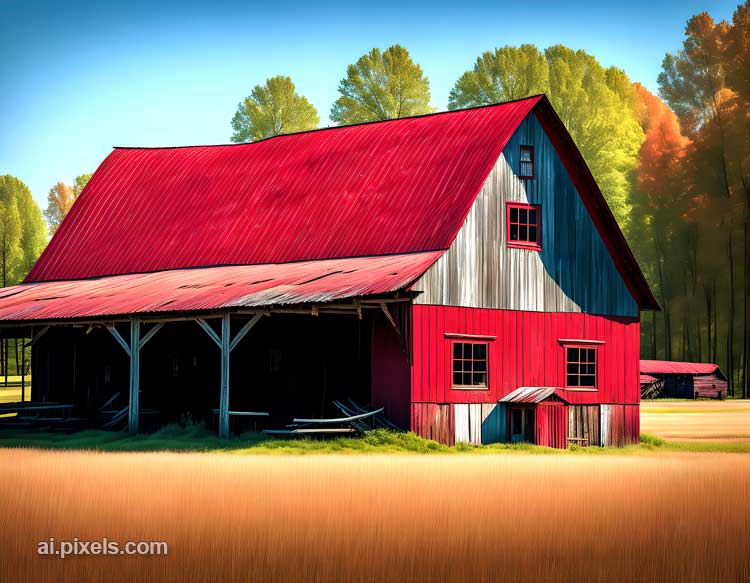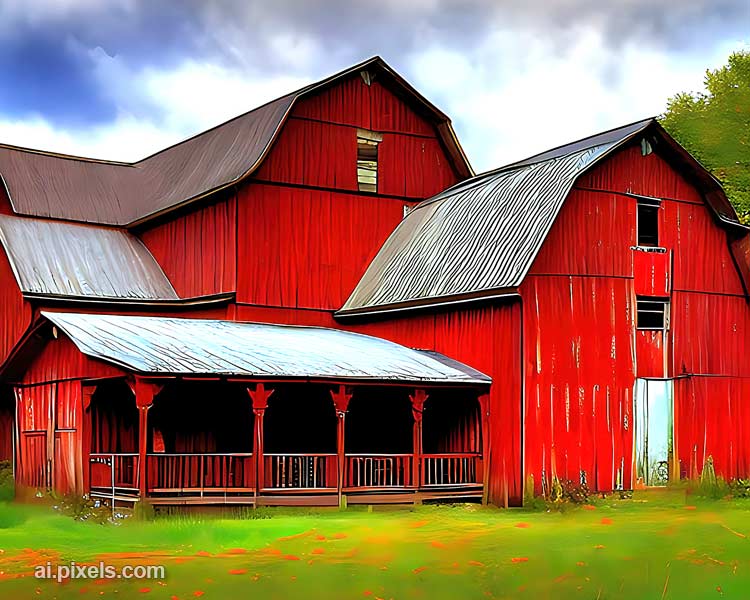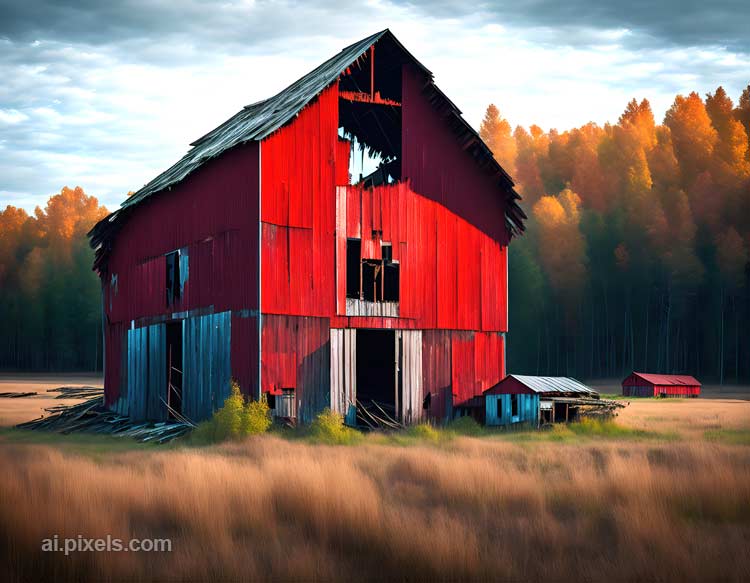The red barn has become a symbol of America’s agrarian past, with its bright paint standing in stark contrast to the fields around it.
Red barns are a classic American symbol, and for generations have been a reminder of our agricultural heritage. However, many of these iconic structures are now disappearing due to their age and lack of maintenance. In addition, their land is often being developed for other uses or sold off to developers.

The red barn has become a symbol of America’s agrarian past, with its bright paint standing in stark contrast to the fields around it. The design of the red barn was simple yet functional – large doors that allowed hay wagons to be pulled in easily, and tall roofs that were designed to keep hay dry during storage. It also provided shelter for livestock and stored farm equipment used in crop production.
Many old red barns still exist today but are rarely seen because they have fallen into disrepair or been demolished due to changing land-use patterns. With this loss comes an important part of our nation’s legacy – the communal gathering places where farmers shared stories and exchanged news about their farms and families.
History of Red Barns
Red barns have been a staple of rural America since the 1700s. In fact, they have become an iconic landmark in our nation’s history. They are often associated with a simpler time, and for many people evoke a sense of nostalgia. The red color was popular because it reflected light to help farmers see the barn at night, and also stood out from their other buildings or crops in the landscape. Red barns were particularly popular during the 19th century when settlers built them as part of homesteads throughout much of North America. However, due to modernization and urban sprawl, red barns are becoming increasingly scarce. Today, only about 1% of all American farmsteads contain a red barn—a significant decrease from what used to be common across the landscape. As such, these structures are vanishing from our historic rural landscapes as they continue to succumb to development pressures or fall into disrepair over time without proper maintenance and care.
Factors Contributing to Disappearance
Habitat destruction due to agricultural practices and urbanization has been a major factor in the disappearance of red barns. Industrial farming uses larger plots of land to maximize crop production, resulting in the bulldozing of smaller farms and their accompanying structures. Urban expansion also contributes to this problem as developers buy up rural areas for residential housing, shopping centers, and other businesses. Additionally, many older barns have become too costly for farmers to maintain or upgrade due to the increase in materials prices over time. As a result, these deteriorating structures are often left abandoned and eventually removed from the landscape.
Another contributor is plain neglect or disinterest from farmers towards such heritage structures; some individuals may not see their value beyond being an eyesore on their property that requires repairs they cannot afford. Thus they let them fall into disrepair until they’re no longer viable preservation candidates or are simply torn down altogether. Furthermore, with more modern barn designs becoming increasingly popular among contemporary farmers, there is less emphasis being placed on preserving traditional Red Barns which can contribute to their eventual extinction as well.
Impact on Farming Communities
Farming communities in America have been drastically affected by the decline of red barns. Many of these historic structures are disappearing due to increased urbanization, natural disasters, and lack of maintenance. The effects of this vanishing tradition can be seen in the diminishing agricultural industry and its impact on small towns across the country.
The disappearance of red barns is a sign that traditional farming practices are no longer supported or valued in many rural areas. With fewer farms to support local economies, farmers struggle to make ends meet as they lose access to crucial resources like land and financial capital needed for their operations. This puts additional strain on their families and further erodes the sense of community that has tied these regions together for generations.
Moreover, this fading icon also has an effect on future generations who may not get a chance to experience what it’s like to live off the land or watch crops grow during harvest season. Without these experiences, young people may never understand how integral agriculture is not only for providing food but also for sustaining rural culture and history in America.
Preservation Efforts
Historic barns in America are quickly disappearing due to the costs of their upkeep and repair, as well as urban sprawl. Preservation efforts seek to save these iconic structures before they are demolished or forgotten.
In recent years, state and local governments have taken a more active role in preserving historic barns through grant programs, tax incentives, and other initiatives. Organizations like The Trust for Public Land have also come together to help landowners restore and protect these important pieces of American culture.
Furthermore, many states now have laws that require developers to preserve part of the structure if a barn is impacted by new construction plans. These laws provide financial assistance for repair work or relocation of threatened barns when feasible. With this kind of support, preservationists can ensure that many of these red barns will continue standing for generations to come.
Revitalization Possibilities
One revitalization possibility for vanishing red barns in America is to preserve the structures by turning them into historical landmarks. This could involve restoring the barns and maintaining them as a symbol of Americana and rural culture. Additionally, such sites could be used as educational opportunities to teach visitors about the importance of preserving history and celebrating local culture.
Another potential revitalization option is to use the red barns as sustainable agricultural operations. By utilizing former farm structures, farmers can gain access to land that may have been previously off-limits due to cost or other factors. In addition, many of these buildings are ideal for housing equipment and livestock so they can serve an essential purpose in modern farming operations. Finally, repurposing old red barns into functional agricultural spaces also helps maintain their legacy as symbols of rural life in America.
Conclusion
In conclusion, vanishing red barns are a symbol of the changing landscape and the corresponding erosion of rural life in America. They represent more than just the beauty of these iconic structures—they also remind us that many aspects of our traditional ways of life are moving further away from us, disappearing into history. As we become increasingly connected to each other through technology, as well as more urbanized and industrialized, it is important to take time to pause and reflect on what is being lost along with our progress. The preservation efforts for red barns all around the country show that there is still hope for protecting and preserving some part of our cultural heritage so that future generations can enjoy and appreciate them. Red barns may be vanishing from our physical landscape but thanks to those who work hard to protect them, they will never disappear entirely from our collective memory.
Of course, these Red Barn images are available as prints and on a variety of home decor items. Either click an image above or one of the links below.
Link to: Vanishing Red Barn
Link to: Dilapidated Red Barn
Link to: Decaying Red Barn
Link to: Artificial Intelligence Gallery at Fine Art America/Pixels.



One Reply to “Vanishing Red Barns in America”